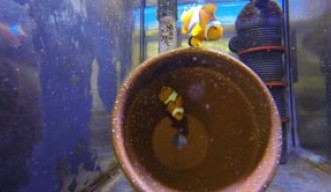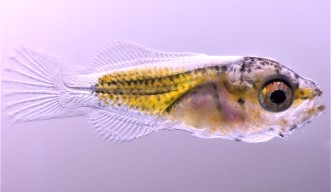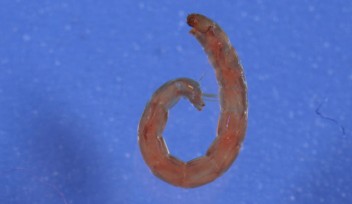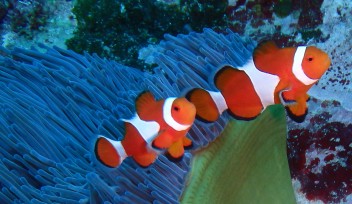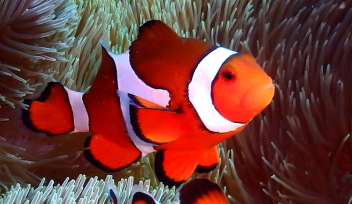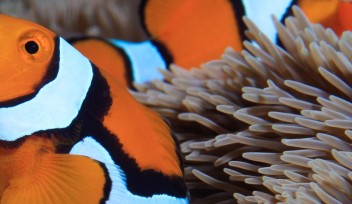The incredible journey of clownfish larvae: Mini athletes, maximum performance
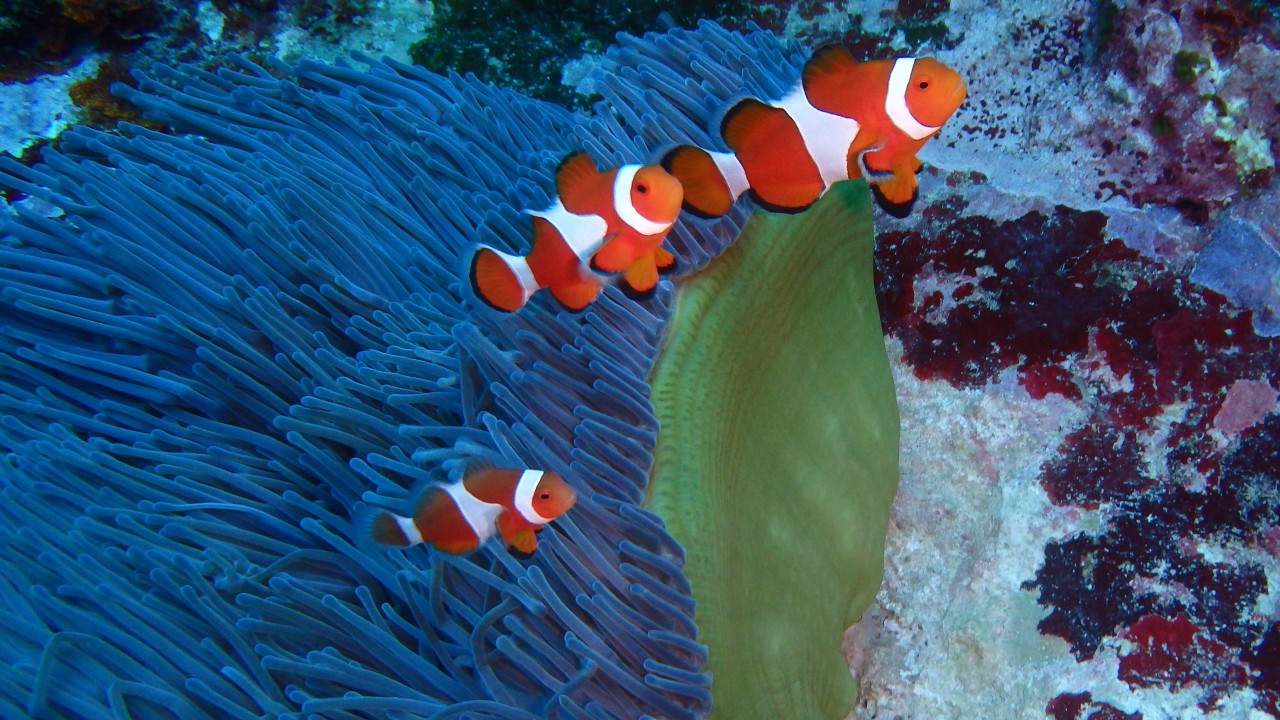
Written by Natacha Roux, Vincent Laudet, and Merle Naidoo
Marine fish larvae can be compared to athletes who must perform if they want to survive. The success of their journey, and transformation from larvae to adults, a process known as metamorphosis, is crucial for the sustainability of fish species.
Imagine you are a tiny transparent fish larva, measuring around 2 millimeters. Right after you hatch, you find yourself lost in a huge blue environment - the ocean, where your journey starts. For several days or weeks, you will have to constantly swim in unknown surroundings, find food for energy, escape predators, develop your sensory systems to orientate yourself, and achieve your main goal - finding a home, a nice habitat close to the coast in which you will be able to settle.
While you do all this, you also face growth and massive body changes as part of your metamorphosis, enabling you to become a miniature adult ready to face a new coastal environment.
How do these larvae manage the different changes that occur in their bodies during their journey? An international team of scientists have investigated the role of thyroid hormones in the coordination of the metamorphosis in a well-known marine species, the clownfish, Amphiprion ocellaris.
They have discovered a strong interaction between metabolic processes in cells – processes that help convert food into energy - and thyroid hormones during the metamorphosis of clownfish. As clownfish journey from the open ocean to coral reefs in search of a home, these interactions, which occur both in captivity and in the wild, allow thyroid hormones to coordinate changes in energy needs with available environmental resources.
The article titled “The multi-level regulation of clownfish metamorphosis by thyroid hormones” was published in the journal Cell Reports. OIST scientists Dr. Natacha Roux, Prof. Vincent Laudet, Dr. Saori Miura, Mr. Yuki Tara, Mr. Mathieu Reynaud and Dr. Agneesh Barua, collaborated on the article, together with researchers from universities in France, Taiwan and the USA.
Additionally, the researchers found that thyroid hormones were not only involved in the triggering of the metamorphosis process itself, but also have a major role in coordinating the transformation of various organs and processes that occur during metamorphosis. These processes include color vision, digestion, ossification - the process of creating new bone material by cells called osteoblasts, pigmentation, the metabolism of the larvae, and its ability to produce energy from food which changes with time as the food they consume also changes.
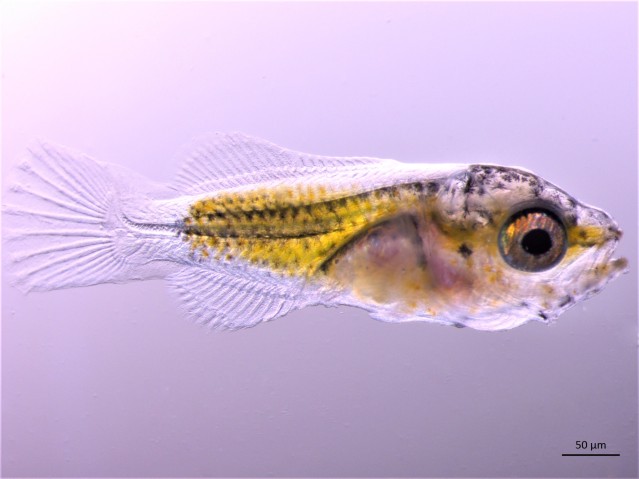
“It’s like a switch; we can turn on specific genes and turn them off,” Dr. Natacha Roux, a researcher in the Computational Neuroethology Unit at OIST and lead author of the article explained. “The idea was to turn off a specific gene that is known to regulate metabolism and see if it was going to impact on metamorphosis or not. We also accelerated the metamorphosis of some clownfish to check for changes in appearance.”
“We added small molecules to the water in glass containers with clownfish larvae that speed up their metamorphosis and regulate their metabolism. The fish take it in as they breathe, it binds to specific proteins in cells called receptors and changes something,” Professor Vincent Laudet, head of OIST’s Marine Ecology and Evolutionary Developmental Biology unit said. “We wanted to know if you change the metabolism do you change the metamorphosis or not, or are the two things totally separate? In fact, they are not at all separate which means the timing of metamorphosis is critical for the survival of the larvae.”
Importantly, the journey of marine fish larvae in the open ocean and the metamorphosis process are very energy demanding. Therefore, it is critical that metamorphosis occurs at the right moment both ecologically and physiologically. Fish populations can only be renewed if young larvae successfully face all these challenges and metamorphose correctly before reaching a new coastal population.
This study applies not only to marine fish but also to other animals, as metamorphosis is a common process regulated by thyroid hormones. In fact, when human babies are born, medical doctors measure thyroid hormones immediately because these hormones are instrumental for human development in early life, similar to how they affect the development of clownfish.
Written by Natacha Roux, Vincent Laudet, and Merle Naidoo
Article Information
Research Units
For press enquiries:
Press Inquiry Form










